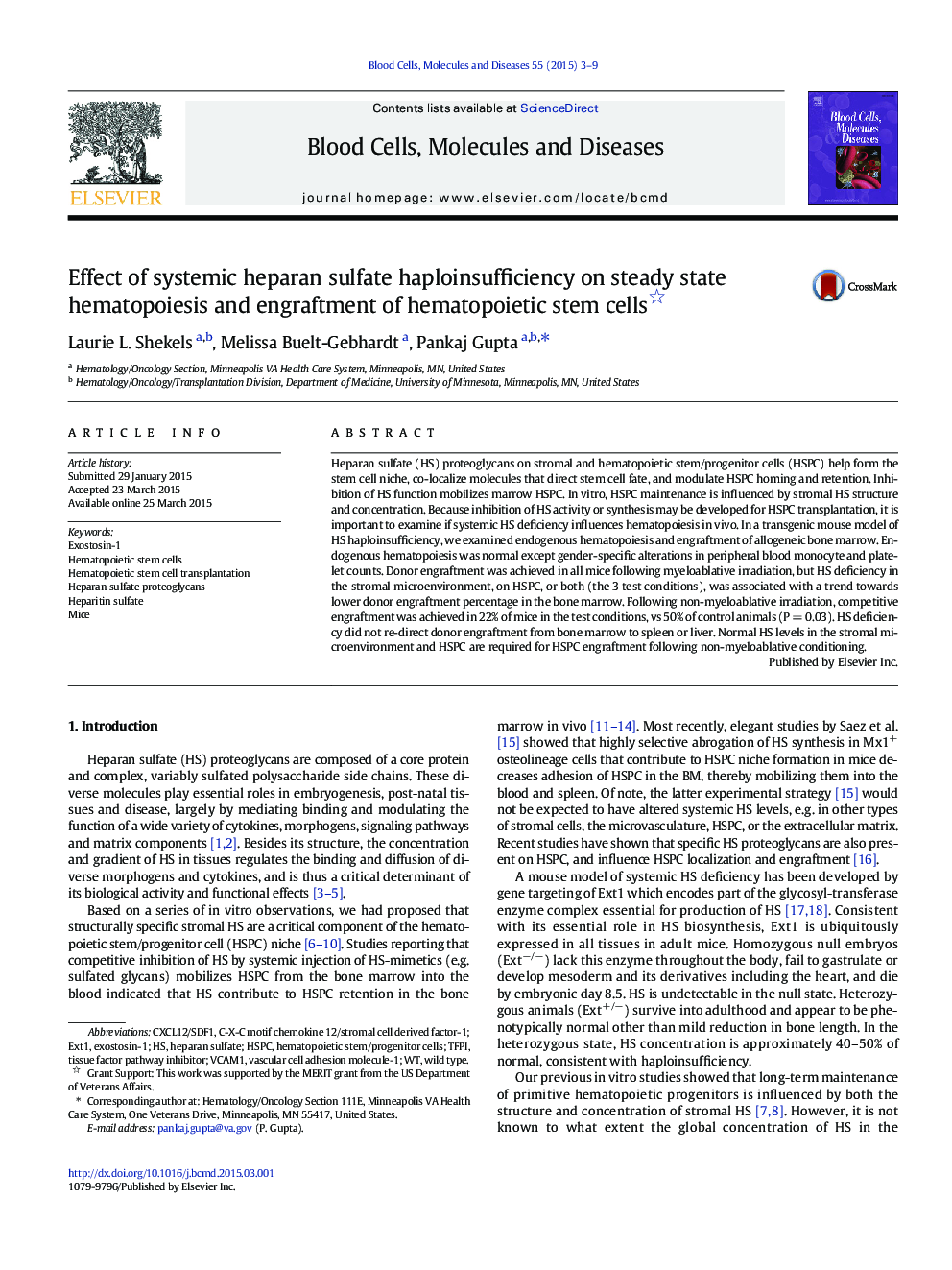| Article ID | Journal | Published Year | Pages | File Type |
|---|---|---|---|---|
| 2827064 | Blood Cells, Molecules, and Diseases | 2015 | 7 Pages |
Heparan sulfate (HS) proteoglycans on stromal and hematopoietic stem/progenitor cells (HSPC) help form the stem cell niche, co-localize molecules that direct stem cell fate, and modulate HSPC homing and retention. Inhibition of HS function mobilizes marrow HSPC. In vitro, HSPC maintenance is influenced by stromal HS structure and concentration. Because inhibition of HS activity or synthesis may be developed for HSPC transplantation, it is important to examine if systemic HS deficiency influences hematopoiesis in vivo. In a transgenic mouse model of HS haploinsufficiency, we examined endogenous hematopoiesis and engraftment of allogeneic bone marrow. Endogenous hematopoiesis was normal except gender-specific alterations in peripheral blood monocyte and platelet counts. Donor engraftment was achieved in all mice following myeloablative irradiation, but HS deficiency in the stromal microenvironment, on HSPC, or both (the 3 test conditions), was associated with a trend towards lower donor engraftment percentage in the bone marrow. Following non-myeloablative irradiation, competitive engraftment was achieved in 22% of mice in the test conditions, vs 50% of control animals (P = 0.03). HS deficiency did not re-direct donor engraftment from bone marrow to spleen or liver. Normal HS levels in the stromal microenvironment and HSPC are required for HSPC engraftment following non-myeloablative conditioning.
